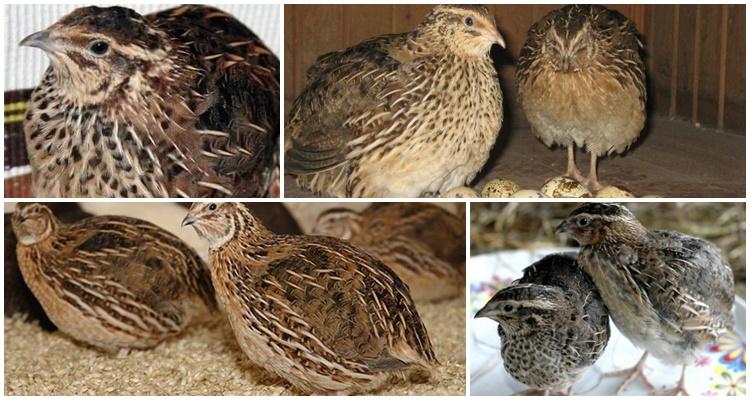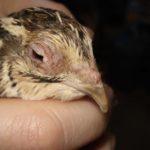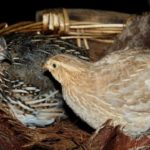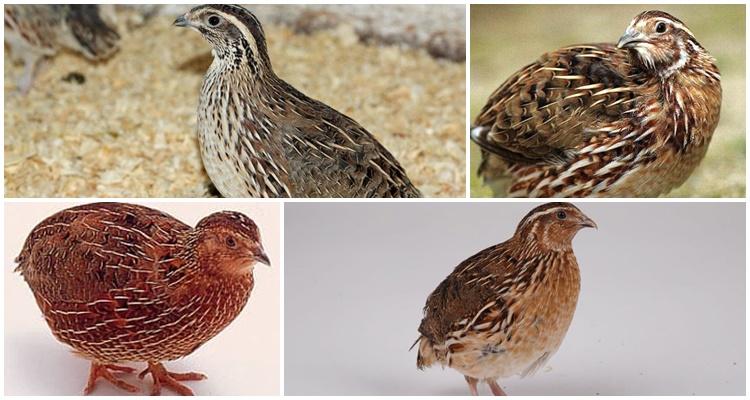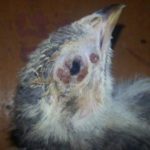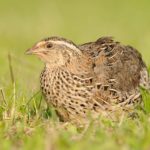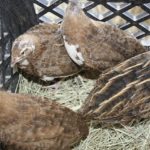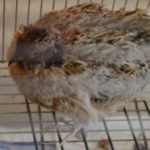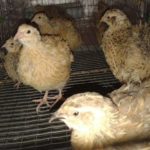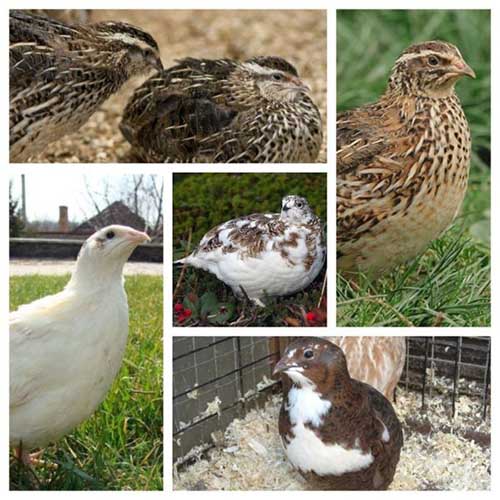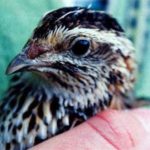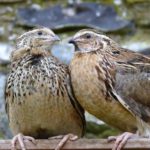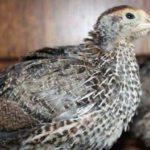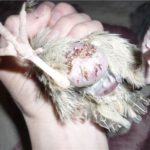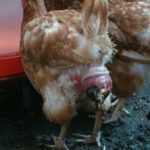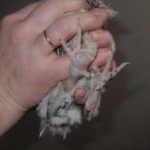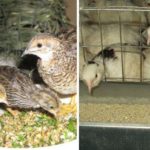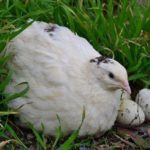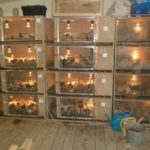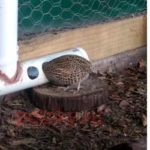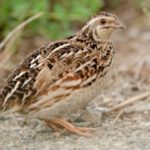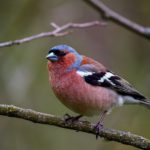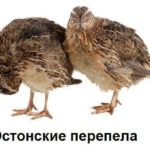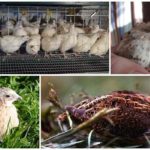Farmers take all measures to preserve the health of the winged inhabitants of the farmstead. It is important to know quail diseases, a description of their symptoms and treatment methods. The bird has a strong immune system, but some infections pose a threat of mass infection of birds. If timely measures are not taken, diseases will destroy the livestock in record time.
Quail diseases and their treatment
Dietary quail meat is in demand, and eggs, despite their size, are not inferior to chicken eggs in terms of the content of useful elements. But violation of the conditions in which birds are kept can cause illness. Some are dangerous to humans.
Contagious diseases
Infections are most dangerous for quails. When the first signs of illness are detected, sick birds are advised to immediately isolate them to stop the spread of the virus.
Pseudoplague
The disease affects the digestive and respiratory organs, paralyzes the nervous system of birds and ends in the death of quails.
The virus manifests itself in different ways:
| Variety | Characteristic signs |
| Typical | Diarrhea accompanied by blood clots, cramps, fever and refusal to eat |
| Asymptomatic | There are no visible manifestations |
Veterinarians do not treat pseudoplague. Even after recovery, quail remain a source of infection and can infect other birds. When an illness is detected, the livestock is completely replaced and large-scale disinfection measures are organized.
Salmonellosis
The cause of the disease is often unsanitary conditions for keeping quails. Adult birds are more resistant to the virus, but the fragile organism of chicks is not able to resist the disease. Manifestations of infection:
- Dehydration accompanied by vomiting and persistent diarrhea.
- Inhibited reaction to external stimuli.
- Weakness.
The disease is classified as dangerous to humans. Since effective methods of combating the pathology have not been developed, quails are destroyed.
Pasteurellosis
Pathogenic bacteria quickly infect the body of quails and lead to the death of birds. Common symptoms:
- The beak takes on a bluish tint.
- Diarrhea with blood.
Sometimes the disease occurs without external manifestations.The virus is seasonal and occurs in quails during cold snaps. Disinfection measures are agreed upon with the veterinarian after confirmation of the diagnosis.
Aspergillosis
The fungal disease more often affects young animals than adult quails. The disease is accompanied by symptoms:
- Blue beak and limbs.
- Weakness and shortness of breath.
- Loss of appetite with severe thirst.
Complex therapy includes taking Nystatin, Clotrimazole or other antibiotics as prescribed by a veterinarian, as well as adding vitamin preparations to the birds’ food.
Colibacillosis
Poor quality food and indoor dirt lead to an imbalance in the intestinal microflora of birds and the proliferation of pathogenic bacteria. The disease poses a danger to young and adult birds with poor health. Escherichia coli causes:
- Digestive system disorder.
- Blockage of the anus with feces.
- Change in beak color.
Treatment is carried out with antibacterial drugs. The 5-day Enronita course helps a lot. Acidophilic yogurt soothes irritated intestines and manifestations of dysbacteriosis. Premises for keeping quails are treated with antiseptic agents, and feeding and drinking areas are especially thoroughly disinfected.
Defeat by down-eaters
Parasites multiply in the downy plumage of quails and cause severe itching. Other manifestations:
- Weight loss.
- Reduced egg production.
- Cases of deaths among chicks.
Insecticides are used to control pests. Farmers often use cleansing baths. The container is filled with a mixture of sand, to which sulfur is added in powder form, and resin. This method effectively rids quails of parasites.
Nematodosis
Nematodes attack the respiratory organs of birds. Symptoms of the disease:
- Shortness of breath, accompanied by coughing attacks.
- Discharge from the beak.
- Trembling of the head.
Anthelmintic drugs are added to drinks or mixed with food. Veterinarians usually prescribe Levamisole.
Non-infectious
Non-infectious diseases arise from an unbalanced diet or being kept in unsanitary conditions.
Pecking
Pathology manifests itself in the form of outbreaks of aggression and a tendency to cannibalism. Quails peck weaker quails to death. The disease is provoked by close quarters, excessively bright light and a poor diet, leading to a deficiency of nutrients necessary for the normal functioning of the body.
Hostile individuals are isolated, the rest of the population is transferred to a larger room. The menu is enriched with vitamin and mineral complexes. Usually this is enough to normalize the situation.
Hypo- and hypervitaminosis
Vitamin deficiency leads to serious consequences. In quails we observe:
- Disorders of the gastrointestinal tract system.
- Decreased appetite.
- Slow development.
- Increased feather loss.
Premixes, as well as the introduction of a sufficient amount of fresh vegetation and legumes into the diet, correct the situation. Yeast also contains a large amount of useful substances.
Oviduct prolapse
The disease appears in quails that were transferred early to adult food. Experienced poultry farmers resort to such measures after the birds reach puberty. Oviduct prolapse can be avoided by adjusting your diet.In this case, yeast, green food, and a small amount of bone or fish meal are useful.
Abnormal shell
Thinning of quail egg shells occurs due to a lack of calcium and vitamin D3 in the body. To treat abnormal manifestations, the level of minerals in the birds’ feed is increased. Shells crushed to a powdery state, chalk or food additives are added to food.
Lost pen
Drafts and dry indoor air lead to alopecia in quails. The down often thins out on the back. Bald patches cover the head and neck area. Feathers become brittle, break or fall out completely. The cover of birds is restored when yeast is included in the daily diet and after the microclimate in the pen is corrected.
Preventive actions
Caring care and a well-designed diet will protect the winged livestock from most health problems. Farmers are advised to check their quail pens. Conditions for keeping birds:
- Temperature control, absence of drafts, light conditions and cleanliness.
- Daily litter removal.
- No crowding allowed.
- Keeping feeding and drinking areas clean.
- Separate keeping of young animals and adult herds.
- Monthly quarantine for new residents of the compound.
It is also necessary to monitor the nutrition of quails, provide the birds with vitamins and mineral supplements and not exceed the recommended norms. It is important to vaccinate birds and not neglect consultations with veterinarians in case of illness.
Preventive measures, care and care will relieve serious problems. Quails rarely get sick if you follow all the rules for caring for poultry and monitor the quality of food.

